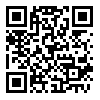Volume 2, Issue 2 (april 2018)
AOH 2018, 2(2): 108-115 |
Back to browse issues page
Download citation:
BibTeX | RIS | EndNote | Medlars | ProCite | Reference Manager | RefWorks
Send citation to:



BibTeX | RIS | EndNote | Medlars | ProCite | Reference Manager | RefWorks
Send citation to:
Zare Sakhvidi M J, Nematolahi A, Mihanpour H, Mansouri Z. Evaluation of Dermal Exposure to Polycyclic Aromatic Hydrocarbons Using DREAM Method in Production of Bituminous Waterproofing. AOH 2018; 2 (2) :108-115
URL: http://aoh.ssu.ac.ir/article-1-71-en.html
URL: http://aoh.ssu.ac.ir/article-1-71-en.html
1- Department of Occupational Health, Faculty of Health, Shahid Sadoughi University of Medical Sciences, Yazd, Iran
2- MSc of Occupational Health, School of Public Health, Shahid Sadoughi University of Medical Sciences, Yazd, Iran , Alinematolahi89@yahoo.com
3- MSc of Occupational Health Engineering Instructor, Faculty of Paramedicine Abarkouh, Occupational Health Research Center Shahid Sadoughi University of Medical Sciences, Yazd, Iran
4- Department of Psychology and Educational, Faculty of Literature and Humanities Science, Islamic Azad University, Arsanjan Branch, Iran
2- MSc of Occupational Health, School of Public Health, Shahid Sadoughi University of Medical Sciences, Yazd, Iran , Alinematolahi89@yahoo.com
3- MSc of Occupational Health Engineering Instructor, Faculty of Paramedicine Abarkouh, Occupational Health Research Center Shahid Sadoughi University of Medical Sciences, Yazd, Iran
4- Department of Psychology and Educational, Faculty of Literature and Humanities Science, Islamic Azad University, Arsanjan Branch, Iran
Abstract: (2011 Views)
Background: Research has shown that dermal exposure to multi-ring aromatic compounds can lead to skin and systemic absorption of these materials. Due to the low vapor pressure of these materials, the main cause of occupations exposure in certain occupations is skin contact. The production of bitumen products due to the presence of polycyclic aromatic hydrocarbons (PAHS) in the bitumen of the production line has a health hazard. It is noteworthy that skin rashes with polycyclic aromatic hydrocarbons in this industry can cause skin problems in the workplace. This study evaluates skin exposure to these compounds in the ISO-industry using DREAM method. Methods: In this study, we evaluated 120 different workers in different groups of four waterproofing plants with aromatic hydrocarbons. In the DREAM method, five types of skin exposures including distributing exposure, transitional exposure, displacement exposure, probable exposure, and actual exposure are assessed and calculated using tables and software. Results: The highest transmission and distribution exposure was found to be 28.81 (19.5) and 9.1 (4.86), respectively, in the manufacturing jobs and bitumen ponds. Displacement exposure was observed only in roll-up and labeling groups. The areas of the hand and shoulder were more likely to be exposed than other parts of the body. The probable and real exposure to the head and arm was lower than elsewhere. In all occupations, the most important exposure to the skin was transmission and distribution exposure. Conclusion: DREAM method can be used to assess skin exposures. In this study, the actual and probable skin exposure levels were approximately the same, indicating a lack of proper skin protection in the workforce. Unhealthy behaviors, non-use of personal equipment and inappropriate connection are the causes of this finding.
Keywords: Dermal exposure, Multi-rheological aromatic hydrocarbons, Bituminous waterproofing industry, DREAM method
Type of Study: Research |
Subject:
General
Received: 2018/04/8 | Accepted: 2018/04/8 | Published: 2018/04/8
Received: 2018/04/8 | Accepted: 2018/04/8 | Published: 2018/04/8
Send email to the article author
| Rights and permissions | |
 |
This work is licensed under a Creative Commons Attribution-NonCommercial 4.0 International License. |





